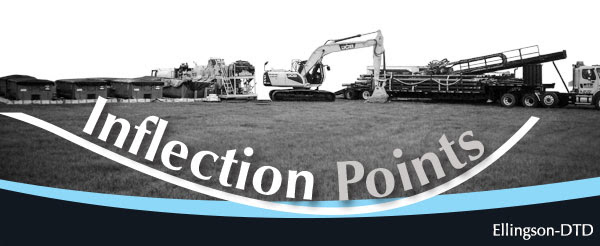Sideways Sparging
Volume 8, Issue # 10 – October 2022
We frequently point out that pretty much any kind of vertical remediation well application can be (and has been) “turned sideways”.
Whether the application is groundwater or soil vapor extraction, amendment injection, thermal remediation, etc. etc. HDD presents a viable option for changing up the orientation of every known remediation technology.
But what drives that re-orientation?
In the world of environmental remediation, HDD is often solving some sort of access issue. For one reason or another, the targeted contamination occurs beneath surface infrastructure that makes traditional vertical drilling infeasible or at least extremely inconvenient.
That is all well and good, but there are also many circumstances where a horizontal orientation simply works better than a vertical well configuration. That is to say: the advantage of turning the well sideways comes from the altered geometry of the well screen.
In this month’s newsletter we’ll focus on one of those important applications: Air Sparging.
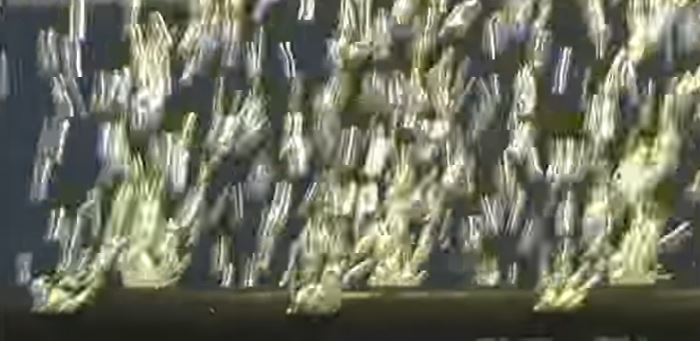
Fig 1: Air sparging through a submerged horizontal HDPE screen. Image courtesy of Air Diffusion Systems, a specialty sparge screen manufacturer.
Horizontal Air Sparge Wells – The Difficult Access Case
First, let’s not take anything away from the access advantages provided by horizontal air sparge wells.
For example, Ellingson-DTD has installed lots of sparge wells at Air Force bases, mainly because of the access advantages. Airfields tend to have petroleum contamination, which is a great application of air sparging. And that contamination is often underneath active flight areas.
Towering up a vertical drill rig in between two active runways is incredibly disruptive to the mission. Setting up an HDD rig off to the side somewhere on the 14th fairway of the officers’ golf course is HIGHLY preferable (for the mission anyway…the officers must get over it somehow).
Take another excellent (and very common) application for horizontal air sparge wells. Imagine a service station with an underground storage tank (UST). The petroleum plume from the leaky UST has migrated offsite, underneath a busy four-lane highway.
Again, the challenge and headache of trying to install vertical well points in the middle of a highway (and connecting them to a treatment system) is very unappealing compared to the options provided by an HDD approach.
Horizontal Air Sparge Wells – The Superior Geometry Case (Bubbleology 101)
But what if we told you there is a case to be made for installing horizontal air sparge wells even if there are ZERO access restrictions?
Let’s say the plume lies beneath a vacant lot with no roads or buildings or runways or any kind of infrastructure whatsoever. Sure, we might be a little biased, but we believe there is a compelling case for horizontal air sparge wells here too. It’s not about access anymore; it’s about geometry!
At the risk of oversimplifying the process, air sparging is simply pumping air bubbles into a well screen. And lesson #1 of Bubbleology 101 is pretty simple: air rises.
Imagine what happens to the bubbles at the screen interface; they rise UP and around the vertical well screen and casing. Sure, there is a bit of expansion going on and some number of bubbles will push their way out radially from the well. But the unrelenting rising force means the prevailing direction of bubble travel is upwards, which limits the lateral ROI of vertically oriented sparge wells.

Fig 2: Vertically oriented sparge screens struggle to get radial dispersion of bubbles in the subsurface.
Now let’s consider when the bubbles exit a horizontally oriented well screen. Again, the air rises. But this time it’s rising right into the formation above the screen. A properly designed well screen (more on that later) will distribute bubbles all along the entire length. So at least in the axial orientation of the well, we’re not trying to push bubbles sideways anymore. They naturally rise right up into the targeted contamination rather than around the annulus of the well itself.

Fig 3: The geometry of horizontal sparge wells provides more contact between the air bubbles and the formation compared to their vertical counterparts. This results in accelerated and more thorough remediation efforts.
Proper Screen Design is Key
A common objection to this theory of superior horizontal sparge geometry relates to that assumption about getting an even distribution of bubbles across the entire length of the screen. Many remediation practitioners are skeptical that an even flow rate can be achieved across the full length of a screen hundreds of feet long (the longest air sparge screen we’ve installed clocked in at just over 1,100ft long…underneath an active airfield).
This skepticism tends to originate with a misguided assumption about what exactly we mean when we say, “well screen”.
Factory machine slotted screen as illustrated below comes first to mind for most people, because this is what is typically installed in vertical remediation wells. And this type of screen has waaaaay too much open area to achieve an even distribution of air (with typical sparge system pressures and flow rates) across more than a 10ft (ish) section.
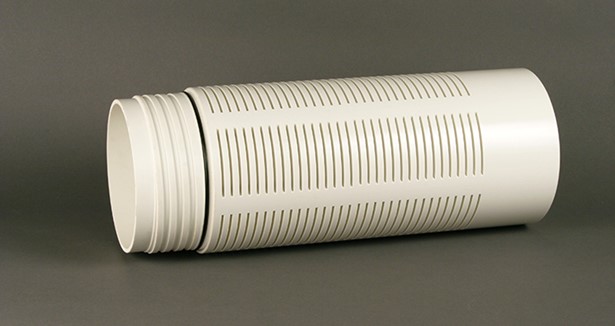
Fig 4: Typical “off the shelf” machine slotted well screen has too much open area for very long-screened horizontal air sparge applications.
The fluid dynamics equation governing discharge from an orifice (slot) is driven by the pressure difference between the inside and outside of the pipe and how big the opening in the pipe is (i.e, slot size). And total screen discharge is thereby directly related to the pressure difference and the number of slots in the pipe.
With all other variables equal, by drastically restricting the open area (reducing the number of slots), air flow is forced to “spread out” across the limited number of slots available. When done correctly, the well behaves more like a pressure vessel, with the inside of the pipe attaining a similar pressure along its length, and leaking air out of each slot at a near even rate.
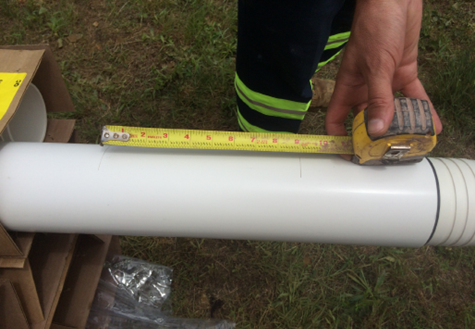
Fig 5: Custom slotted screen design is a crucial element of successful long-screened horizontal wells.
Another approach leverages material properties of HDPE, which is a relatively soft, malleable plastic material. By cutting slits into the HDPE (instead of slots), the casing material actually closes up the perforations in the absence of any back pressure.
In this case a minimum threshold pressure must build up in the entire length of casing, before the slits open up and begin allowing air to sparge.
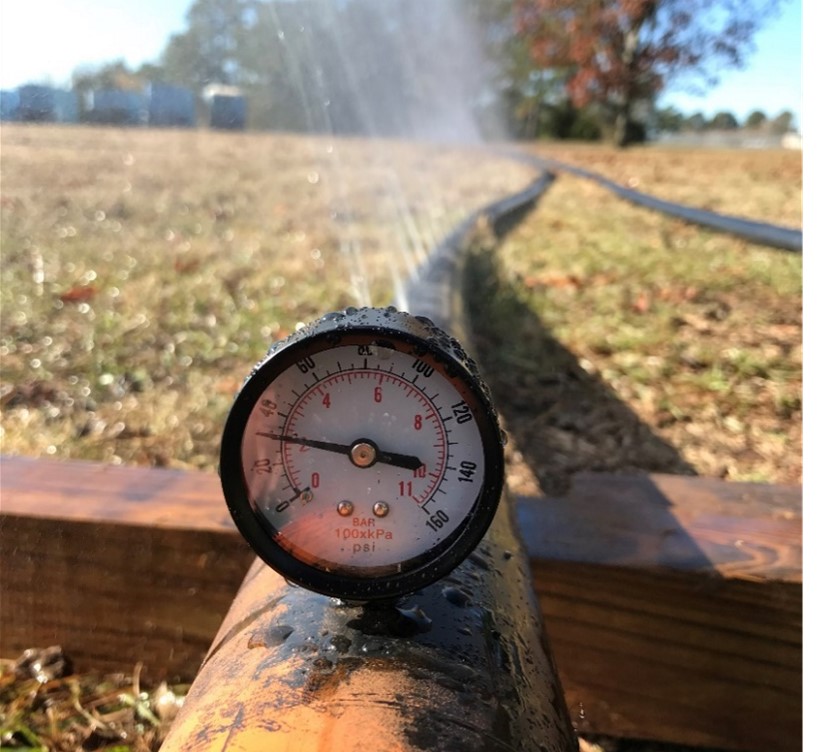
Fig 6: Pressure testing HDPE air sparge screen prior to installation.
Sideways Sparging for All Occasions
In recent years, the environmental industry has spent a lot of time, money and energy coming up with all kinds of new in-situ remedies. Meanwhile air sparging seems to have fallen out of favor with many remediation practitioners.
We can’t help but wonder if this decline in popularity isn’t at least partly the result of most air sparge applications being delivered through suboptimal vertical wells.
In fact, we frequently hear about projects with horizontal sparge wells (installed for access reasons) reaching cleanup goals muchfaster than expected. We believe this is due to the superior geometry achieved by turning the well screens sideways.
Air sparging might be a little bit “old school” in the modern groundwater remediation market, but it remains an extremely effective method for cleaning up contamination.
So, if you have a remediation project and aren’t considering air sparge, is it because you just haven’t had great results with vertical sparge wells? Have you ever tried horizontal wells instead?
And whether your project suffers from difficult access challenges or not, if air sparging is one of the remediation approaches being considered, you owe it to yourself to look more closely at sparging sideways.
Tags: air sparging, HDD, horizontal wells, limited access, remediation
